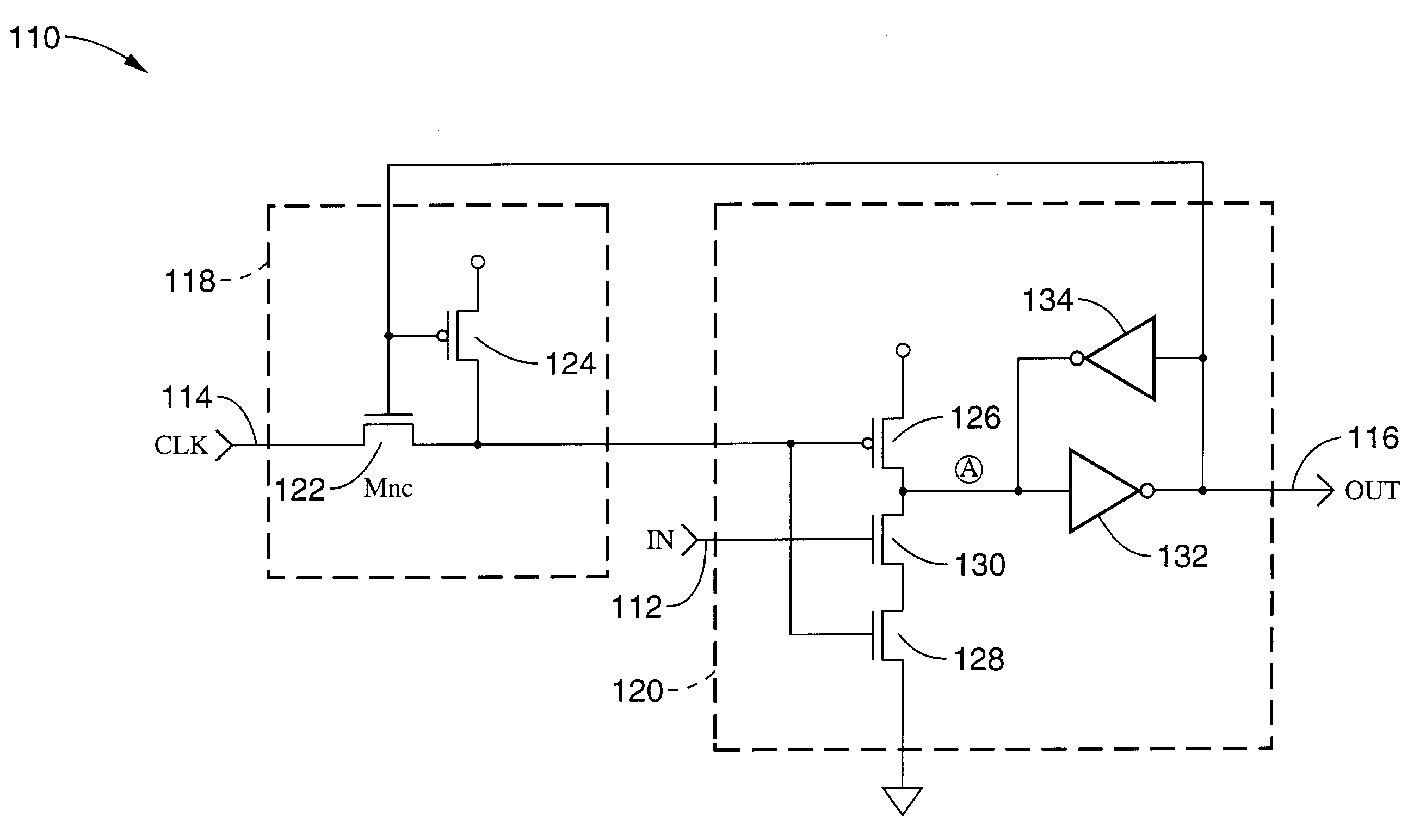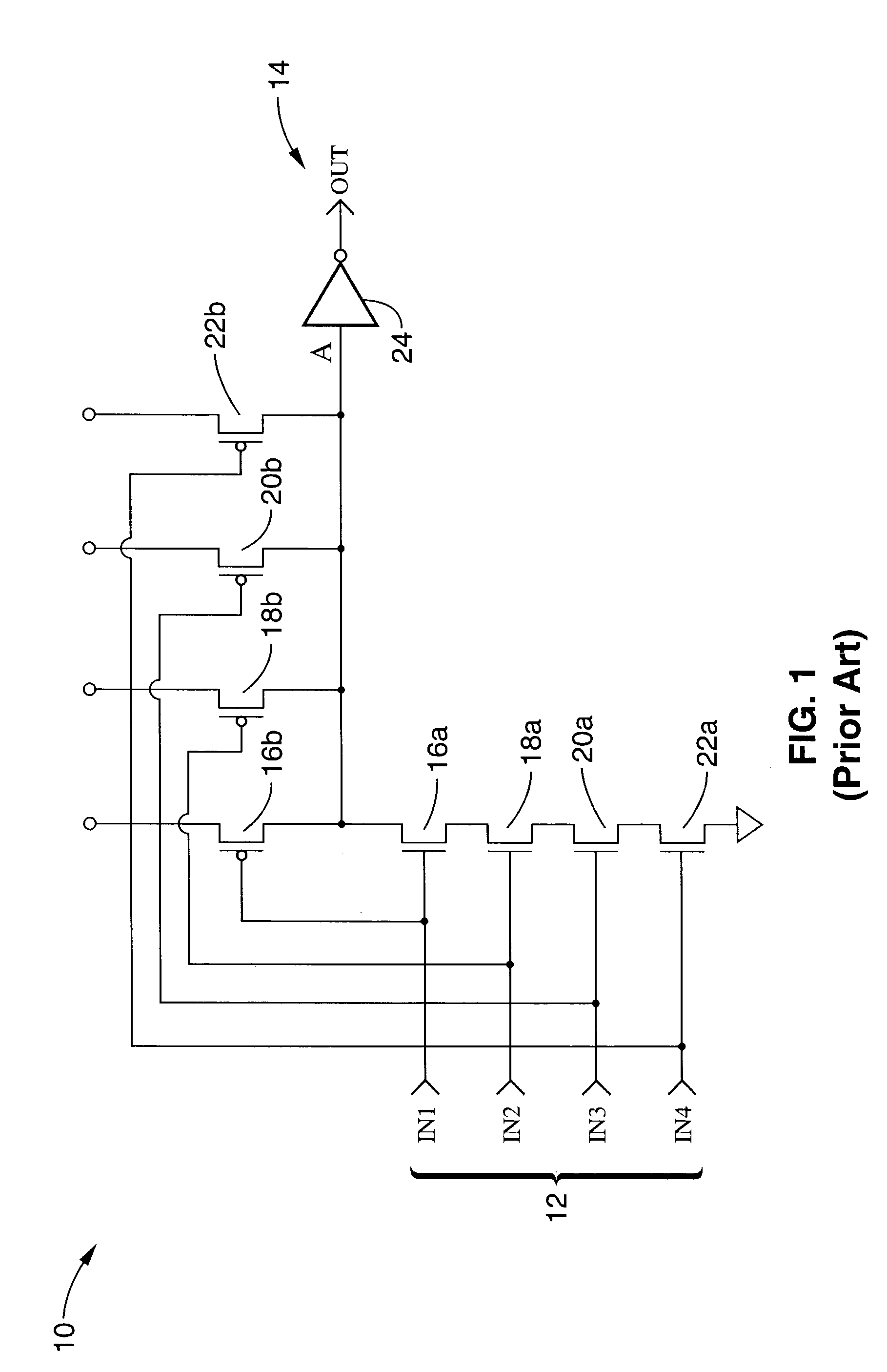Event driven dynamic logic for reducing power consumption
a dynamic logic and power consumption technology, applied in the field of digital logic circuitry, can solve the problems of increasing clock signal loading, requiring higher power clock sources and additional discharging, and increasing circuit power consumption by repetitive charging and discharging, so as to reduce capacitive loading and reduce power consumption. , the effect of reducing power consumption
- Summary
- Abstract
- Description
- Claims
- Application Information
AI Technical Summary
Benefits of technology
Problems solved by technology
Method used
Image
Examples
Embodiment Construction
[0056]Referring more specifically to the drawings, for illustrative purposes the present invention is embodied in the apparatus generally shown in FIG. 4 through FIG. 9. It will be appreciated that the apparatus may vary as to configuration and as to details of the parts, and that the method may vary as to the specific steps and sequence, without departing from the basic concepts as disclosed herein.
[0057]FIG. 4 exemplifies a one input event driven logic circuit 110, similar to the four input AND domino combinatorial logic circuit shown in FIG. 2. Logic circuit 110 has a logic input 112, clock input 114, and output 116. A clock path control circuit 118 is shown for selectively blocking clock signal 114 from a generally conventional dynamic logic circuit 120 in response to a true logic evaluation.
[0058]The general operation of the present method involves cycling the logic circuit through clock phases which include precharge and evaluation phases while an active clock signal is being ...
PUM
 Login to View More
Login to View More Abstract
Description
Claims
Application Information
 Login to View More
Login to View More - R&D
- Intellectual Property
- Life Sciences
- Materials
- Tech Scout
- Unparalleled Data Quality
- Higher Quality Content
- 60% Fewer Hallucinations
Browse by: Latest US Patents, China's latest patents, Technical Efficacy Thesaurus, Application Domain, Technology Topic, Popular Technical Reports.
© 2025 PatSnap. All rights reserved.Legal|Privacy policy|Modern Slavery Act Transparency Statement|Sitemap|About US| Contact US: help@patsnap.com



